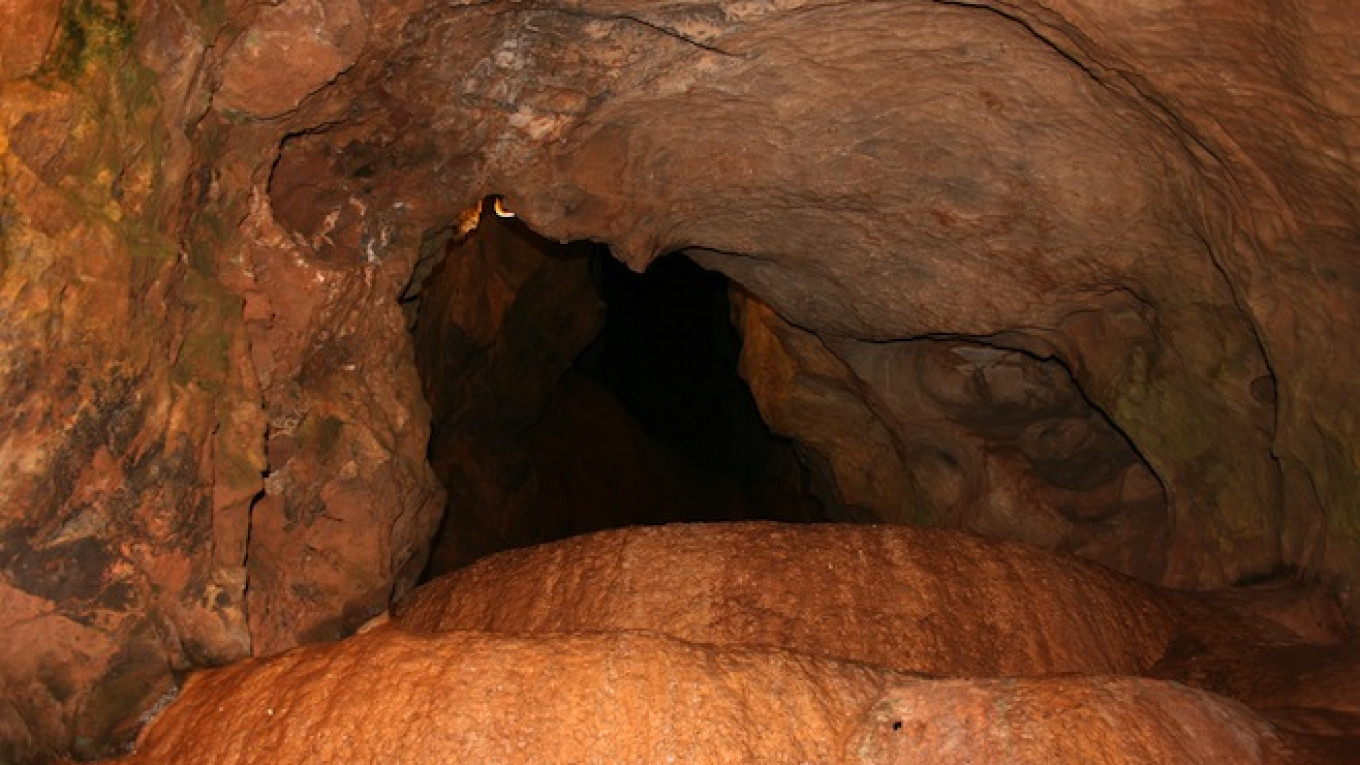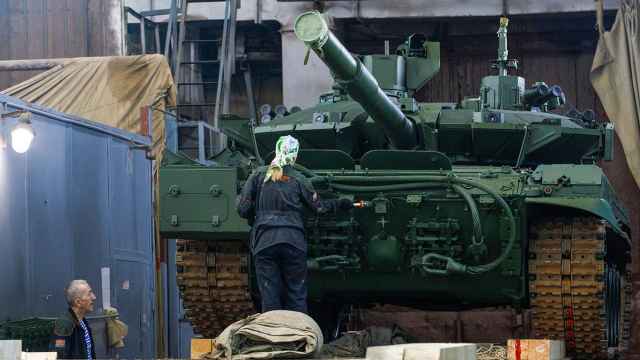Tools and bones of slain animals were discovered in a cave in southern Russia by a team of research scientists, indicating that the cave was inhabited by pre-historic humans about 30,000 years ago, news agency Interfax reported Wednesday.
The researchers found remains of a giant cave lion and bear during a series of underground digs in Russia's republic of Bashkiria, located to the south of the Ural Mountains, a scientist from the regional branch of the Institute for Plant and Animal Ecology, Dmitry Gimranov, was quoted as saying by Interfax.
“All of those bones were lying together along with human stone tools,” he was quoted as saying.
Researchers estimate that the remains date back to the Mousterian period — a Stone Age era that lasted from about half a million to tens of thousands of years ago — and consider the human weapons to represent a “very large collection,” Gimranov was quoted as saying.
A cave bear had its skull pierced by a stone weapon, though researchers found “no such traces on the bones of the lion,” he said, Interfax reported.
The researcher pointed out that before this discovery, no evidence had been found suggesting that pre-historic humans in the Urals were hunting bears with these types of weapons. “This is for sure a big discovery,” he said.
According to Pavel Kosintsev, a senior research scientist at the institute, humans “seem to have visited this cave about 30,000 years ago,” according to the report. However, the fact that only one type of stone weapon has been discovered in the cave indicates that it was not a frequently used hunting ground, but instead a site of religious significance for the pre-historic humans that used it, Interfax reported.
The findings “allow us to suppose with a high degree of probability that this was a sanctuary,” Kosintsev was quoted as saying.
The fact that pre-historic humans left their stone weapons inside the cave may also indicate the tools were placed there as religious offerings, Gimranov said.
As for the cave bear, scientists are still debating how it ended up in the cave. Gimranov said it was unclear whether a man pulled the dead animal into the cave, or if it entered the cave on its own and died there.
“The specimens we found are large and [the animals were] at the peak of their ability. Why they died there — those are questions that future years of excavation at this cave should give an answer to.”
Contact the author at [email protected]
A Message from The Moscow Times:
Dear readers,
We are facing unprecedented challenges. Russia's Prosecutor General's Office has designated The Moscow Times as an "undesirable" organization, criminalizing our work and putting our staff at risk of prosecution. This follows our earlier unjust labeling as a "foreign agent."
These actions are direct attempts to silence independent journalism in Russia. The authorities claim our work "discredits the decisions of the Russian leadership." We see things differently: we strive to provide accurate, unbiased reporting on Russia.
We, the journalists of The Moscow Times, refuse to be silenced. But to continue our work, we need your help.
Your support, no matter how small, makes a world of difference. If you can, please support us monthly starting from just $2. It's quick to set up, and every contribution makes a significant impact.
By supporting The Moscow Times, you're defending open, independent journalism in the face of repression. Thank you for standing with us.
Remind me later.






